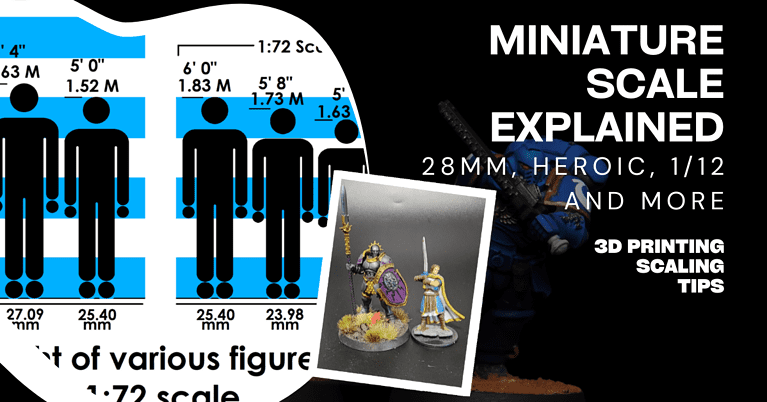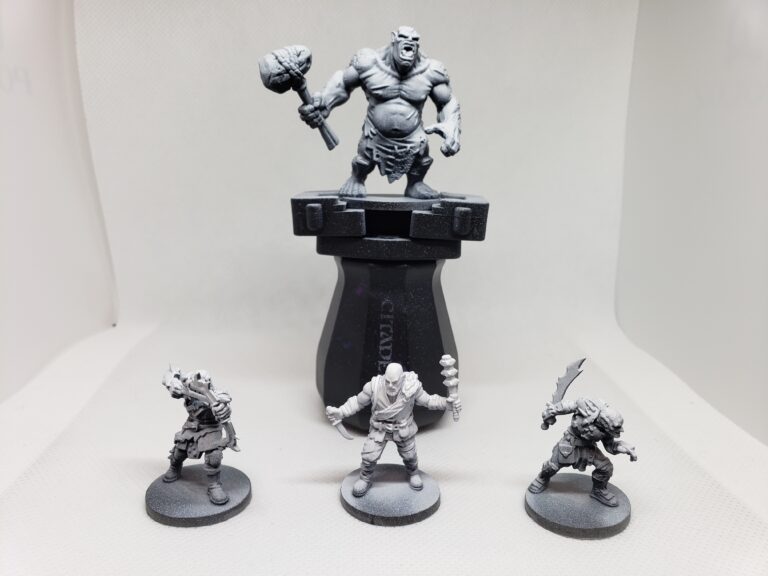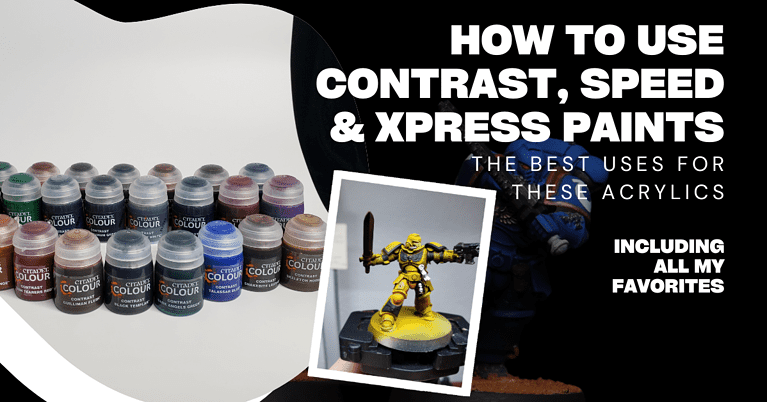Paint Consistency for Miniature Painting: Thinning Paint Guide
How to get the ideal paint flow with good coverage
Takeaways
- The vast majority of miniature painting is done with acrylic paints
- Acrylic paints are typically thinned down with water, although special mediums like flow improver are also used situationally
- There is no set ratio of thinner to paint as all paints come in different consistencies
- Thinner paint requires less thinning, thicker paint requires more.
- The ideal consistency of acrylic paint for miniatures will flow off a brush easily, cover the model well, and not be too runny.
Thinning acrylic paint is a very simple process and that’s one of the bigger benefits of acrylic paints. They are non toxic, can be thinned with simple tap water, and dry quickly. I will go into what you need to get started, and then the method I personally use to thin my paints.
Properly thinned paint is one of the biggest jumps you can take in your early miniature painting progression. Paints that are too thin or thick will give a poor result. Put some practice in on this and you’ll get it down quickly!
What you’ll need to thin your acrylic paints for miniature painting:
- Acrylic Paint. A dropper or pot of acrylic paints, ideally brands that specialize in miniature and model painting like Vallejo, Citadel, Reaper, Pro Acryl or others.
- Palette. A palette which is simply a surface to put your paints on and mix them when needed. You can use anything from a simple paper plate to a wet palette specifically designed for this use.
- Cup of Water. For acrylics one of the main benefits is it can be thinned with simple tap water. A cup of water will be what you dip your brush into, then apply the water it absorbs to the paint.
- Patience: Thinning your paints for miniature painting is an art more than a science. You’ll want the paint thicker or thinner depending on what you’re trying to achieve. Keep working on it and you’ll get the feel for it quickly.
Steps for Thinning Acrylic Paints for Miniature Painting:
- Place a small amount of acrylic paint on your palette. If you are using dropper bottle paint, one drop will do. A similar amount can be taken from a pot of paint with the tip of your brush
- Fill you water cup with standard tap water. Dip the tip of your paint brush in the water and then use the paint brush to mix up the paint a bit.
- Your goal is to get the paint to a consistency where it’s flowing easily. Get the paint to a point that it’s not giving you resistance when you work it across the palette a bit.
- Test the consistency of the paint. Many people use the side of their hand, your thumbnail or just pulling the paint across your palette with your paint brush.
- Add more water or paint using the same processes if needed to get the desired result.
And that’s it! Again it’s a simple but critical process. You’ll be doing this every time you paint. Achieving a good paint consistency will get you a smooth coat of paint.
Here is a very short and to the point video for you from Citadel on thinning your paint. I chose it just so you can see how he applies the water:
Citadel Colour – Thinning Your Paints
Other Considerations When Thinning your Acrylic Paints for Miniature Painting
There are just two more concepts I want to briefly touch on here. They are important to how much you’ll thin your paints, and how they will apply on your miniatures.
Wet palettes: A wet palette is what it sounds like, a damp surface to put your paints on. It’s a sponge beneath some specialized paper made for allowing a small amount of water to pass through. The water wicks through the paper on top and keeps your paints fresh for days.
The reason I mention it here is that the wet palette will further thin your paints sometimes. Its just something to be aware of if you’re using a wet palette.
Loading your brush: Loading your brush is the term used for getting paint into your paintbrush. If you look at your paint brush, the sharp point is the tip. Beneath the tip is the belly. What you’re looking to achieve is to load paint in the belly of the paint brush.
If the paint is the right consistency, not too thick or too watery, it will flow very nicely from the belly of the brush to the tip, and then on to your model.
Load the brush by simply dipping the brush into the paint and working it around a bit. Once you’ve done that, wick the brush off on a piece of paper towel to get the excess off. Those two simple steps will make a big difference in how the paint flows off your brush.




